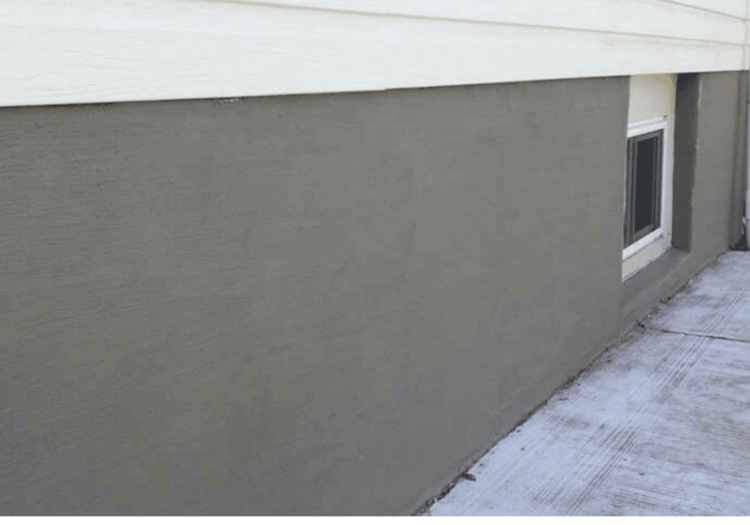Foundations are the backbone of every home, bearing the weight of the structure and ensuring long-term stability. While many homeowners focus on the visible beauty of brick facades, the hidden foundation often requires just as much care. One effective, yet sometimes overlooked, method to protect your foundation is parging. This process involves applying a thin layer of mortar or cement over masonry surfaces, creating a protective barrier against moisture and weathering.

Understanding how parging works can help you appreciate its value. Parging seals small cracks and imperfections, preventing water from seeping into the foundation and causing damage. For homeowners seeking trusted insight, resources from industry experts such as gta masonry offer helpful guidance on maintaining long-lasting structures.
How Parging Works
The parging process starts with preparing the masonry surface. This means thoroughly cleaning the area to remove dirt, loose debris, and old flaking material. Once cleaned, a specially formulated mortar is applied evenly across the foundation wall. This layer fills in minor cracks and creates a sealed surface that resists the ingress of water and environmental damage.
Over time, a well-applied parging coat not only prevents moisture but also discourages the growth of mold and mildew. Its smooth finish can enhance the overall appearance of an aging foundation, lending a fresh, uniform look to what might otherwise be a neglected surface.
Benefits of Parging for Foundation Protection
Parging offers several key benefits that make it a smart investment in the longevity and maintenance of your home:
- Moisture Barrier: The protective layer created by parging significantly reduces water penetration, which helps to avoid interior leaks and structural decay.
- Enhanced Durability: By guarding against the damaging effects of weather, parging increases the lifespan of your foundation.
- Improved Aesthetics: A freshly parged surface not only protects but also provides a clean, refreshed look that boosts curb appeal.
- Preventive Maintenance: Early intervention with parging can nip minor issues in the bud, preventing more costly repairs in the future.
When to Consider Parging
It’s wise to inspect your foundation regularly for signs of wear. If you notice cracks, crumbling patches, or water stains, it could be time to apply a new parging coat. Seasonal factors, such as the stresses of freeze-thaw cycles, can accelerate the degradation of masonry surfaces, making timely maintenance essential.
Many experts recommend that homeowners consider parging as part of an overall maintenance strategy, especially in regions where weather extremes are common. Engaging a professional for these protective measures ensures that the job is done thoroughly and with the right materials.
Conclusion
Understanding parging and its role in foundation protection is essential for maintaining the health of your home. This simple yet effective technique not only extends the life of your foundation but also enhances its appearance—keeping your home safe and attractive in the process.
For more detailed advice on foundation maintenance and to ensure quality work, exploring professional parging services can be an excellent next step.


A parging system for your foundation seals small cracks, prevents water infiltration, and enhances the appearance and durability of your house. Maintenance is a key component.
Parging protects your home’s foundation by sealing cracks, preventing moisture damage, and enhancing insulation. It strengthens the structure, improves durability, and adds a smooth, finished look to exterior surfaces.
Parging plays a crucial role in preserving and protecting your home’s foundation. It involves applying a thin layer of mortar over exterior foundation walls, creating a smooth, uniform surface. This helps seal small cracks, prevent moisture infiltration, and protect against weathering, especially in freeze-thaw cycles. Besides enhancing structural integrity, parging also improves the foundation’s appearance, offering both functional protection and visual appeal for long-term home durability.
Parging plays a crucial role in protecting your home’s foundation by applying a smooth, protective layer of mortar or cement to exterior walls. This coating seals cracks and gaps, preventing water infiltration and moisture damage. It also improves the foundation’s durability against weathering and erosion. Besides protection, parging enhances the foundation’s appearance, giving it a clean, finished look. Overall, parging helps maintain structural integrity and prolongs your home’s lifespan.
In addition to protecting the foundation of your home from moisture and cracks, edging also enhances durability and appearance for a more stable and attractive home.
Parging acts as a protective shield for your home’s foundation, sealing minor cracks and preventing moisture infiltration. It not only enhances durability but also improves the aesthetic appeal of your exterior walls.
Parging seals cracks, prevents moisture intrusion, and enhances the durability of your home’s foundation. As well as improving aesthetics, it also helps prevent future structural problems.
Parging plays a crucial role in shielding your home’s foundation from moisture, cracks, and harsh weather elements. By creating a smooth, protective layer, it enhances durability and improves curb appeal simultaneously.